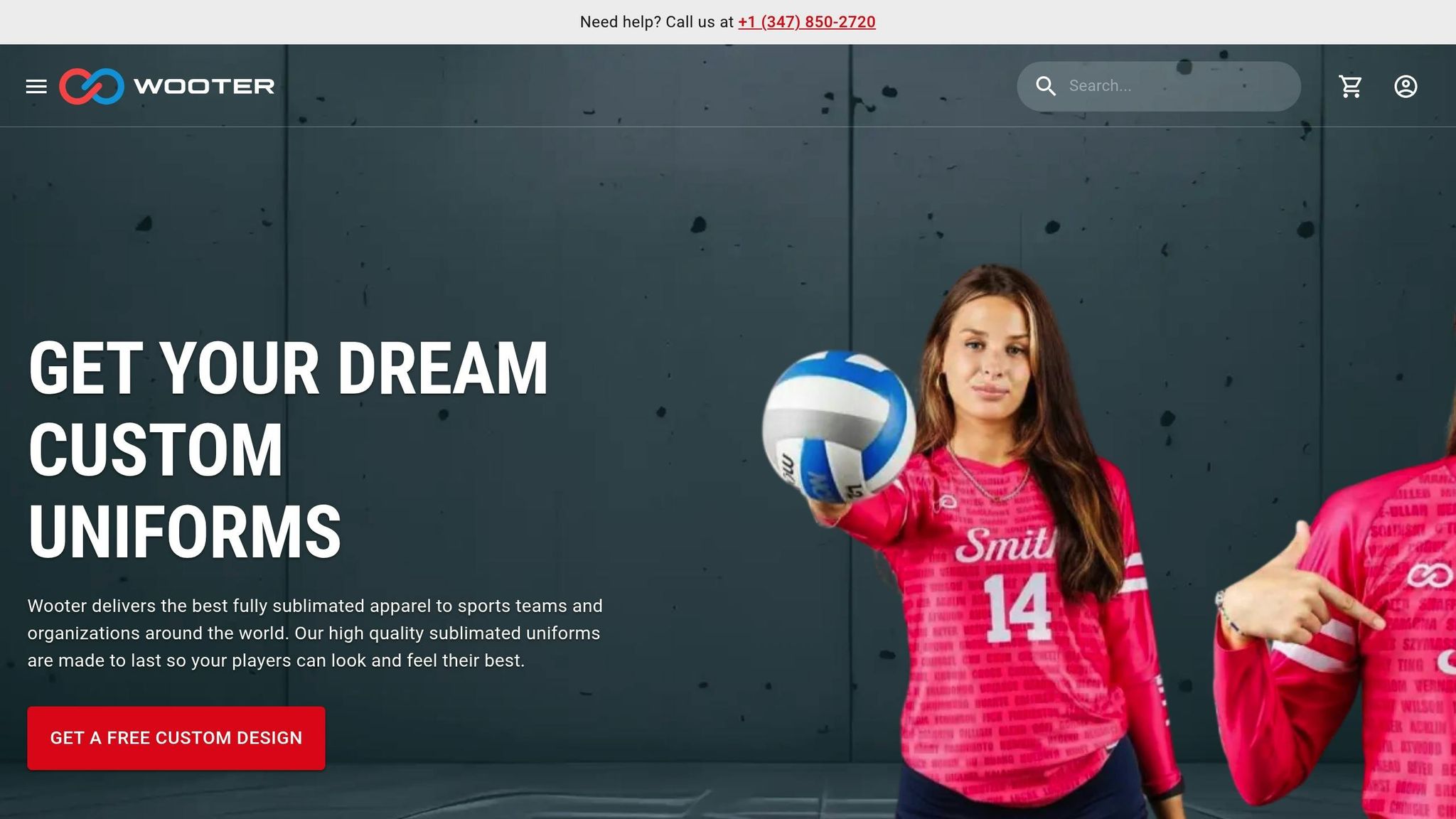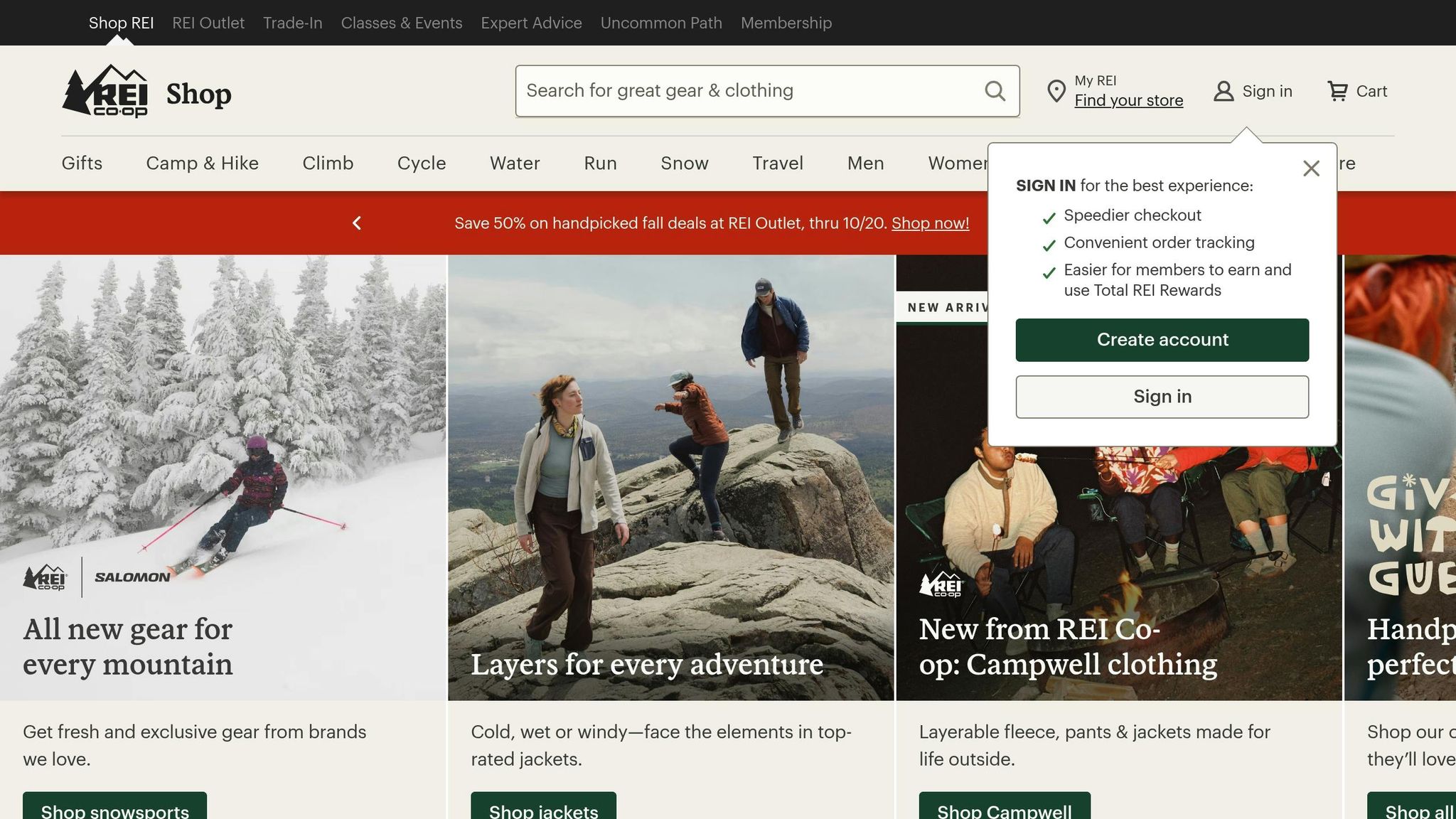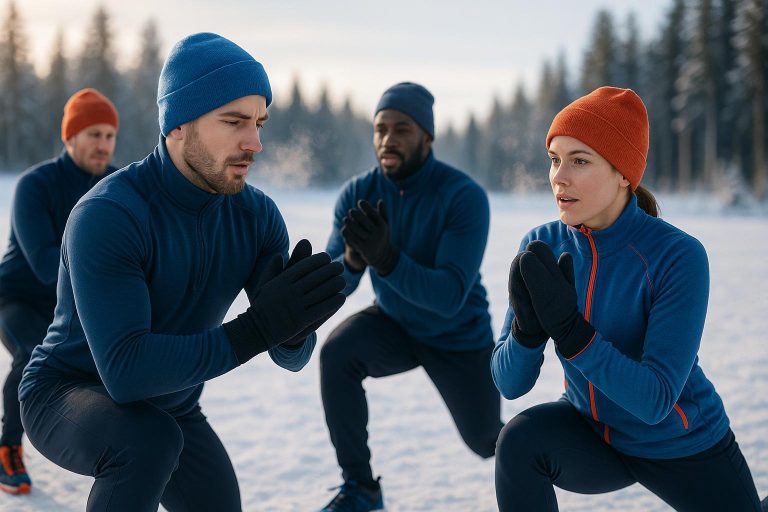When it’s cold, choosing between thermal gloves and mittens can impact team performance and comfort. Gloves offer better finger movement and grip, making them ideal for active players handling equipment or balls. Mittens, however, retain more warmth by grouping fingers together, making them better for extreme cold or sideline roles.
Key Points:
- Thermal Gloves: Best for precision tasks, grip control, and active players. Prices range from $30–$120.
- Mittens: Superior warmth for freezing conditions and less-active roles. Hybrid designs combine warmth and mobility.
Quick Comparison:
| Feature | Thermal Gloves | Mittens |
|---|---|---|
| Warmth | Good, but less than mittens | Excellent, fingers share heat |
| Dexterity | High, precise finger movement | Low, limited finger control |
| Grip Control | Superior for handling equipment | Less precise but sufficient |
| Ease of Use | Harder to wear with bulky gear | Easier to slip on/off |
| Activity Suitability | Great for active players | Better for sideline roles |
For mixed needs, hybrid options like "lobster claw" mittens or 3-in-1 systems work well. Custom gear matching team colors adds a polished look. Your choice depends on weather, activity level, and team roles.
Thermal Gloves: Features and Benefits
Finger Movement and Grip Control
One standout feature of thermal gloves is their individual finger compartments, which allow for independent movement. This design is especially important in team sports where players rely on precision to handle equipment. Whether it’s catching a football, gripping a baseball bat, or dribbling a basketball, these gloves provide the dexterity athletes need to perform at their best.
A snug fit plays a big role in enhancing control, as it helps transmit feedback from the equipment – a feature you won’t find with mittens, where fingers are grouped together. Many gloves also include silicone grip patterns on the palms and fingers, which improve ball handling even in wet or cold conditions. This combination of dexterity and grip gives players a performance edge.
Materials and Insulation
Thermal gloves are crafted from durable synthetic materials like polyester, nylon, and spandex, ensuring flexibility and resistance to harsh weather. They often feature advanced insulation technologies, such as Thinsulate™ or PrimaLoft®, which trap heat without adding bulk. Some gloves also incorporate fleece or wool linings for added comfort and moisture-wicking properties.
To keep hands dry and comfortable, many designs include waterproof, windproof membranes like Gore-Tex®. These layers prevent that uncomfortable, clammy feeling that can occur during intense activity.
Top-quality thermal gloves with Thinsulate™ insulation can keep hands warm even in temperatures as low as -20°F (-29°C).
Extra Features for Teams
Modern thermal gloves go beyond basic warmth and protection, offering features that cater to team needs. For example, many models now include touchscreen-compatible fingertips, allowing players and coaches to use smartphones or tablets without taking off their gloves. This is especially helpful for on-field communication during games or practices.
Reinforced palms with double stitching and extra padding add durability, making the gloves suitable for frequent use. Adjustable wrist closures, often with Velcro straps or elastic bands, ensure a secure fit and help block out cold air. Some gloves also come with removable liners, creating a versatile 3-in-1 system that lets athletes adapt to changing weather conditions.
Prices for high-quality thermal gloves typically range from $30 to $120 USD per pair.
For teams that want a unified look, custom thermal gloves are an option. These can be designed to match team colors and even display logos. Companies like Wooter Apparel specialize in fully sublimated, custom-designed gloves that combine performance with team branding.
Mittens: Features and Benefits
Better Heat Retention
Mittens are champions when it comes to keeping hands warm, thanks to their single-compartment design. Unlike gloves, where each finger is separated, mittens group all four fingers together, allowing them to share body heat. This creates a cozier and warmer environment inside the mitten while reducing exposure to cold air and preventing heat loss. This feature makes mittens especially useful during outdoor winter sports like football or soccer, where temperatures can plummet below freezing. Coaches, trainers, and players on the bench – who often spend long periods stationary – can rely on mittens for better warmth. Even when made from the same materials as gloves, mittens generally outperform them in heat retention. For those needing a balance between warmth and dexterity, "lobster claw" mittens offer a hybrid design, grouping some fingers together while allowing more movement than traditional mittens.
Materials and Durability
The materials used in team sport mittens are carefully chosen to tackle cold weather challenges. Leather mittens are tough and naturally block wind, wool mittens stay warm even when damp, and down-filled mittens provide exceptional warmth without adding much weight – perfect for extreme cold. Many teams opt for synthetic insulation, such as Thinsulate or PrimaLoft, which perform well in wet conditions and dry faster than natural fillers. To handle harsh outdoor conditions, outer shells are typically made from water-resistant fabrics like nylon or polyester, offering protection against wind, moisture, and wear. Reinforced palms and fingertips ensure extra durability, making mittens long-lasting even with frequent use throughout a demanding sports season. This thoughtful construction not only makes them durable but also ensures they are practical for team sports.
Simple Use and Special Features
Mittens are incredibly easy to use, which is a major plus for athletes. With their grouped-finger design, players can quickly slip them on or off during substitutions or breaks – an essential feature in fast-paced sports. Wide wrist openings and easy-on/off cuffs make them even more convenient, while wrist leashes help prevent mittens from getting lost during quick changes. For added protection, some mittens come with built-in wrist guards, particularly useful for contact sports or winter activities like skiing. Modern innovations include touchscreen-compatible mittens, allowing athletes to use devices without exposing their hands to the cold. Teams can also customize mittens to match their colors and display logos, adding a professional touch. Companies like Wooter Apparel specialize in creating fully sublimated thermal accessories that combine team branding with dependable cold-weather performance.
Thermal Gloves vs. Mittens: Side-by-Side Comparison
Comparison Chart: Pros and Cons
Choosing between thermal gloves and mittens comes down to understanding their strengths and weaknesses. Each option offers unique benefits that can impact comfort, performance, and practicality during cold-weather activities. Here’s a breakdown to help you decide what works best for your team:
| Feature | Thermal Gloves | Mittens |
|---|---|---|
| Warmth | Provides good insulation but less effective than mittens | Excellent – fingers share body heat for superior warmth |
| Dexterity | High – allows precise finger movements for detailed tasks | Low – limited finger movement reduces fine control |
| Grip Control | Superior – ideal for handling equipment and balls | Less precise but works well for holding poles or simple objects |
| Ease of Use | Can be harder to put on with bulky gear | Easier to wear, especially for younger athletes |
| Comfort | Snug fit may feel restrictive | More relaxed fit – fingers move freely inside |
| Activity Suitability | Perfect for high-precision sports | Better for low-activity roles and extreme cold conditions |
Mittens take the lead in warmth since they allow fingers to share heat, making them ideal for freezing conditions. However, this design limits dexterity, which is why gloves are better for tasks requiring precise finger control, like handling equipment or adjusting gear. Gloves are especially useful in sports where temperatures hover around or above 32°F, but their insulation becomes less effective as the mercury drops.
Best Options for Different Sports and Roles
The right choice often depends on the sport and the role of the person wearing them. For players in active sports like football, soccer, baseball, or softball, gloves are the go-to option. Their superior dexterity ensures players can perform tasks like gripping a ball or adjusting equipment without hassle. On the other hand, mittens are a better fit for coaches, bench players, or younger athletes who prioritize warmth over precision.
For teams looking to strike a balance, hybrid designs like lobster claw gloves offer a middle ground. These combine the warmth of mittens with some level of finger mobility, making them a versatile choice for varying needs.
To maximize comfort and functionality, consider a role-based approach. Active players can stick with gloves for mobility, while those spending extended periods in the cold – like coaches or trainers – can opt for mittens. This ensures everyone gets the protection they need without compromising performance.
For teams wanting to maintain a polished, unified look, companies like Wooter Apparel offer custom options. Teams can match gloves or mittens to their uniform colors, add logos, and create a professional appearance that doesn’t sacrifice practicality. Whether it’s gloves, mittens, or a mix of both, this approach keeps everyone warm, functional, and looking sharp.
sbb-itb-4d95ad3
How to Pick the Right Option for Your Team
Weather and Activity Factors
When the temperature drops below 32°F, mittens are often the better choice for retaining warmth. Add wind or precipitation into the mix, and the decision becomes even more critical. Strong winds can sap body heat quickly, making mittens a reliable option in moderately cold conditions. For wet weather, look for waterproof and breathable shells paired with moisture-wicking liners to keep hands dry and comfortable.
The type of sport your team participates in also plays a role in selecting the right gear. Football players, for example, often favor gloves for better grip and ease in handling equipment. Soccer goalkeepers benefit from gloves with individual finger compartments that enhance grip. Meanwhile, baseball and softball teams tend to use gloves during active play, but coaches and bench players may prefer mittens for warmth during downtime.
For fluctuating conditions, hybrid options like split-finger mittens or 3-in-1 systems can be a smart choice. Split-finger designs combine the warmth of mittens with improved dexterity by separating the thumb and index finger. Similarly, 3-in-1 systems allow players to adjust insulation levels by adding or removing liner gloves, providing flexibility as the weather changes. These functional choices also impact how well the accessories blend with the team’s overall uniform.
Matching Team Uniforms
Performance aside, maintaining a cohesive team look is just as important. A unified appearance goes beyond jerseys and shorts – it includes accessories like gloves and mittens. Teams should aim for thermal gear that matches their colors and prominently displays logos, ensuring a polished, professional look in photos or televised events.
Proper sizing is another key factor. Gloves and mittens need to fit all team members, from youth players to adults. Collecting accurate measurements is crucial for both warmth and functionality.
Additionally, think about how these accessories will pair with the team’s various uniform combinations throughout the season. Custom options allow teams to incorporate logos, player numbers, and color schemes, ensuring the gear complements both home and away uniforms. Work with your custom apparel provider to decide the best placement for branding elements, balancing visibility with practicality. This attention to detail ensures that thermal accessories seamlessly align with the team’s overall look.
Custom Thermal Accessories from Wooter Apparel

Custom thermal accessories are the finishing touch to your team’s cold-weather strategy. Wooter Apparel offers personalized gloves, mittens, and other gear with free design services, a wide range of color options, and team branding. Their sublimation process guarantees that colors and logos stay vibrant, even after repeated exposure to harsh conditions.
Wooter’s design team collaborates directly with teams to create thermal gear that perfectly matches existing uniforms. Teams can submit their colors, logos, and design preferences, then review digital mock-ups before production begins. This process ensures the final product meets all expectations. To avoid delays, it’s best to place orders early to account for production and shipping timelines.
For those looking to go beyond gloves and mittens, Wooter also offers a variety of cold-weather gear like custom warm-up jackets and beanies. These additional items can be tailored to match the team’s branding, creating a complete look that keeps players warm and professional, no matter the weather.
Gloves vs. Mittens || REI

Final Decision: Thermal Gloves or Mittens for Teams?
When it comes to choosing between thermal gloves and mittens, it all boils down to what your team needs most. Both options are great for keeping players comfortable in cold weather, but they shine in different scenarios.
Thermal gloves are the go-to choice for maintaining dexterity. They allow full finger movement, which is crucial for sports that require precise handling of equipment or balls. While they might not be as warm as mittens, they’re perfect for players who stay active and generate heat through movement.
Mittens, on the other hand, are the champions of warmth. By keeping fingers together, they create a cozier environment, making them ideal for subfreezing temperatures or for players who spend more time on the sidelines. The trade-off here is reduced finger mobility, but it’s worth it when the priority is staying warm and preventing frostbite.
Main Points to Remember
Here’s a quick breakdown of what to consider:
- Temperature and conditions: Mittens excel in extreme cold, while gloves are better for milder conditions.
- Activity level: Active players benefit from gloves for better control, while mittens suit those who are less active or waiting on the sidelines.
- Team role: Sideline players and youth teams often prefer mittens for their superior warmth, while active players lean toward gloves for their functionality.
For teams that face a mix of weather conditions, hybrid options like split-finger mittens or 3-in-1 systems are worth considering. These versatile designs adapt to changing temperatures without sacrificing performance or team unity.
No matter your choice, you can pair it with custom thermal gear from Wooter Apparel to keep your team looking professional and coordinated. Whether you prioritize precision or warmth, the right gear will help your team tackle any weather challenge with ease.
FAQs
What are the differences between ‘lobster claw’ mittens, traditional mittens, and thermal gloves when it comes to warmth and dexterity?
Hybrid designs like ‘lobster claw’ mittens blend the benefits of gloves and mittens, striking a middle ground between warmth and finger flexibility. Unlike regular mittens, which group all your fingers together to maximize heat retention, lobster claw mittens separate the thumb and index finger from the other three fingers. This setup improves grip and finger movement while still offering more insulation than typical thermal gloves.
Traditional mittens excel in extreme cold, as they trap heat effectively by keeping all fingers together. However, they restrict hand mobility. On the flip side, thermal gloves are perfect for tasks that require precision and dexterity, but they might not provide enough warmth in freezing conditions. Choosing the right option comes down to the activity at hand and the balance your team needs between warmth and flexibility for cold-weather sports.
What should teams think about when deciding between thermal gloves and mittens for cold-weather sports?
When it comes to choosing between thermal gloves and mittens, the decision largely hinges on the demands of the sport and the weather at play. Gloves are the go-to option for activities that require precision, such as throwing or catching, thanks to their superior dexterity. Meanwhile, mittens excel at keeping hands warm by grouping fingers together, which is especially useful in freezing conditions.
Ultimately, the choice boils down to factors like how cold it is, the type of activity involved, and personal preferences. For teams aiming to stay comfortable while performing at their peak, custom-designed gear can add an extra layer of warmth and style during chilly games.
How do custom thermal accessories improve team performance and branding in cold weather?
Custom thermal accessories offer a perfect blend of practicality and team identity, making them a great asset for both performance and branding. By featuring team colors, logos, or distinctive designs, these accessories help create a cohesive, professional appearance that can elevate team spirit and morale.
Beyond aesthetics, quality thermal gear provides essential warmth and comfort during chilly games, allowing players to stay focused and perform at their peak. Adding personalized details not only enhances functionality but also builds a stronger sense of pride and belonging among team members.

